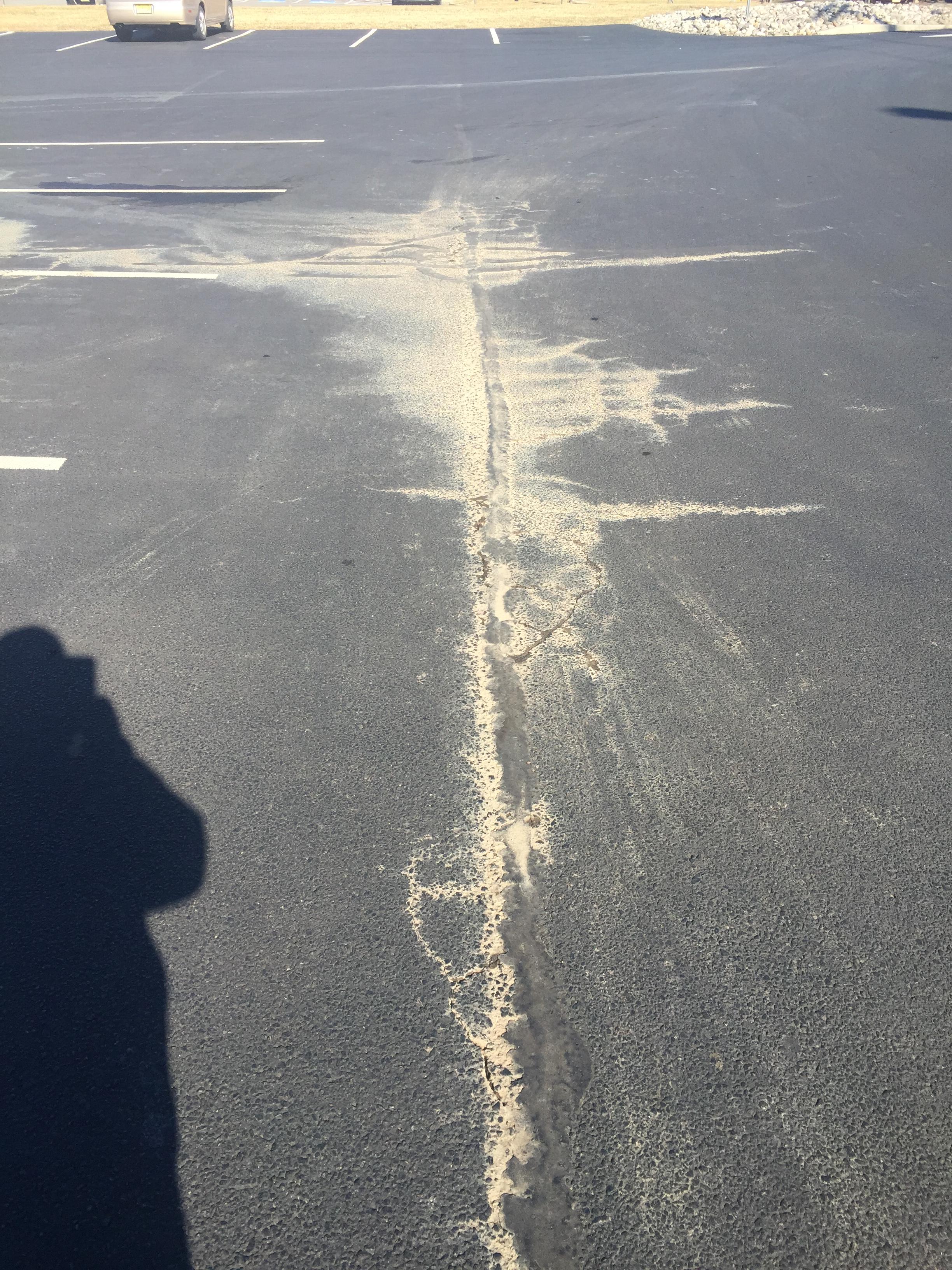Drainage Tile Solves Underground Water Issues In Asphalt Parking Lots

Ground water coming to the surface through cracks in your parking lot is caused by hydrostatic pressure. One of the most effective ways of alleviating this pressure and the seepage it causes is to install drain tile under your asphalt parking lot or concrete sidewalk.
Click The Link Below For A Video Explanation
https://www.youtube.com/watch?v=C378_yr0lyg
Indications that drainage tile is needed are usually some form of water seeping up through the asphalt, either through hairline cracks, potholes, or areas of the asphalt which are always saturated. Exterior drain tile is typically installed in these areas and then plumbed into a catch basin or culvert.
Water coming up to the surface is caused by hydrostatic pressure from either a high water table or water being forced to the surface from a higher elevation when the asphalt parking lot resides in a lower elevation.
It is highly recommended ground water issues be remediated in asphalt parking lots for several reason:
- LIABILITY: In both Snow Belt and Non-Snow Belt areas, ground water issues create a slip and fall liability. In Snow Belt areas the surface water constantly freezes and creates a slip and fall liability from ice accumulation. In addition, it creates unnecessary billing for salt application from your snow plow vendor. In Non-Snow Belt areas the surface water begins to grow moss. Moss is just as slippery as ice when it accumulates on the pavement
- DAMAGE TO ASPHALT: When asphalt is installed it is compacted to a target of 92-98% density to remove as many air voids as possible to prevent water infiltration. When water seeps up through the asphalt from hydrostatic pressure, it penetrates throughout the asphalt and weakens it. It is not uncommon to be able to take your shoe and dislodge aggregate from the water saturated asphalt
- IMPROPER ADHESION OF PAVEMENT SEALERS: When asphalt is constantly wet, both coal tar and asphalt emulsion pavement sealers will not adhere to the damp areas properly. After the sealers are applied they will quickly re-emulsify and track onto concrete, inside your store or into customer’s cars from foot traffic.
- LARGE AREAS OF TOTAL ASPHALT FAILURE: As the water does not have anything redirecting it to a drainage source, it will continue to spread horizontally both above and below the asphalt. As it travels horizontally under the asphalt in the subgrade; the subgrade will weaken and develop large areas of potholes and alligator cracks.
When your budget permits permanent repairs, it is advisable to install a drainage tile network in the areas showing signs of hydrostatic pressure and redirect the water into a catch basin or other drainage swale / culvert.
What Is The Cost To Install Drainage Tile / Underdrain / French Drain?
The costs vary from the size and complexity of the project. On the low side you will probably pay a minimum mobilization of $2,500.00 for a run of less than 100 lineal feet and depending on the amount of asphalt patching required and if the asphalt patching can be completed as part of a paving project for the property. For larger projects you should safely budget $15.00 - $25.00 per lineal foot.



TO LEARN MORE ABOUT UNDERGROUND DRAINAGE OPTIONS
PLEASE CLICK THE LINK BELOW:
/blog/benefits-of-using-drainage-tile-/-parking-lot-underdrain
If you’d like to know more about how drain tile can stop underground water from reaching the surface of your asphalt parking lot, please post your questions in the Comments box below.










Leave a Comment